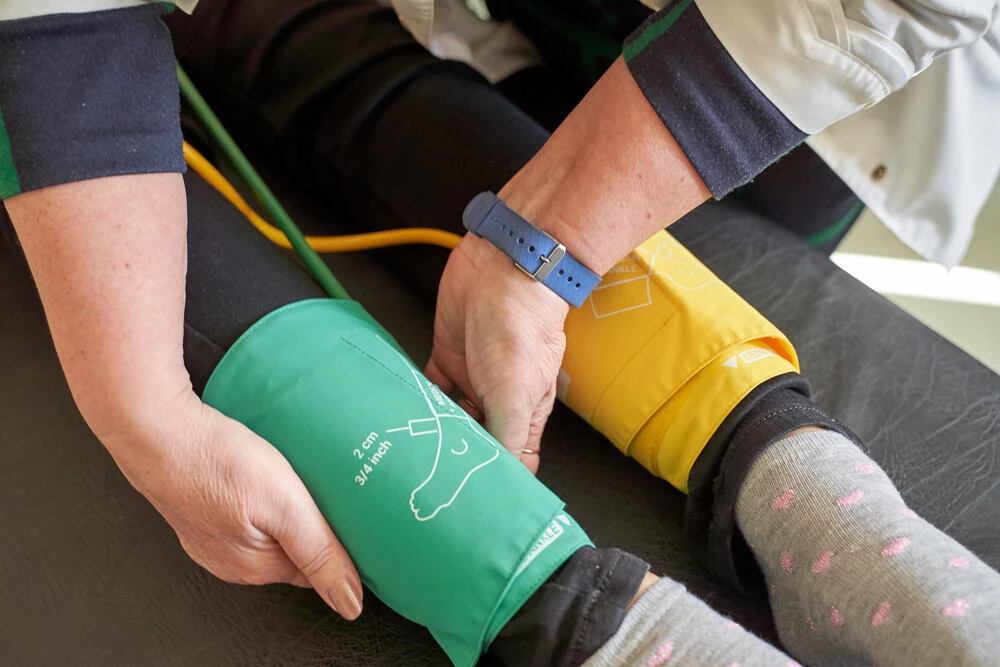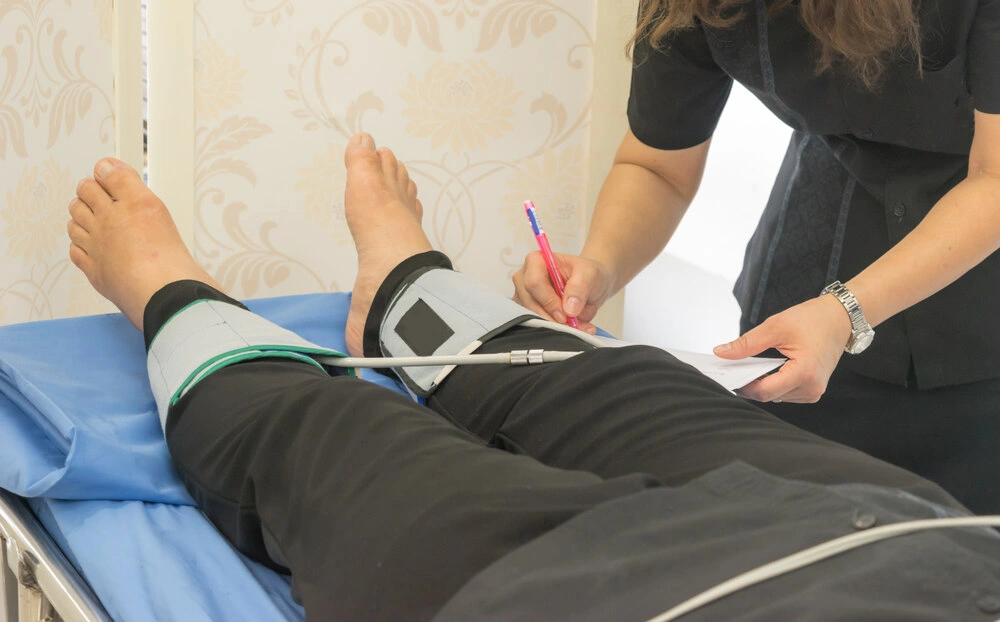Peripheral Arterial Disease (PAD)
Peripheral Arterial Disease (PAD)
Understanding, Diagnosis, and Management
Peripheral artery disease (also called peripheral arterial disease) is a common condition in which narrowed arteries reduce blood flow to the arms or legs.
The medical team at Phoenix Heart is experienced at the prevention, diagnosis, and treatment of peripheral artery diseases, including peripheral artery disease. For an expert consultation and treatment plan, call or book an appointment with a Phoenix Heart office in Glendale, Avondale, Anthem, Avondale, Scottsdale, Cottonwood, and Black Canyon City, Arizona.

Peripheral Artery Disease (PAD) Q & A
What is Peripheral Artery Disease?
What Causes PAD?
Tobacco use is the most important risk factor for PAD and its complications. In fact, 80% of people with PAD are people who currently smoke or used to smoke. Tobacco use increases the risk for PAD by 400%. It also brings on PAD symptoms almost 10 years earlier.
Compared with nonsmokers of the same age, people who smoke and have PAD are more likely to:
- Die of heart attack or stroke.
- Have poorer results with bypass surgery procedures on their legs.
- Have a limb amputation.
Regardless of your sex, you’re at risk of developing peripheral arterial disease when you have one or more of these risk factors:
- Using tobacco products (the most potent risk factor).
- Having diabetes.
- Being age 50 and older.
- Being African American.
- Having a personal or family history of heart or blood vessel disease.
- Having high blood pressure (hypertension).
- Having high cholesterol (hyperlipidemia).
- Having abdominal obesity.
- Having a blood clotting disorder.
- Having kidney disease (both a risk factor and a consequence of PAD).
Although PAD is a different condition from coronary artery disease, the two are related.
People who have one are likely to have the other. A person with PAD has a higher risk of coronary artery disease, heart attack, stroke or a transient ischemic attack (mini-stroke) than someone without peripheral artery disease. A person with heart disease has a 1 in 3 chance of having peripheral artery disease in their legs.
Not surprisingly, the two diseases also share some common risk factors. This is because these risk factors cause the same changes in arteries in your arms and legs as they do in your heart’s arteries.

What are symptoms of PAD?
- A burning or aching pain in your feet and toes while resting, especially at night while lying flat.
- Cool skin on your feet.
- Redness or other color changes of your skin.
- More frequent skin and soft tissue infections (usually in your feet or legs).
- Toe and foot sores that don’t heal.
Half of the people who have peripheral vascular disease don’t have any symptoms. PAD can build up over a lifetime. Symptoms may not become obvious until later in life. For many people, symptoms won’t appear until their artery narrows by 60% or more.
Talk to a healthcare provider if you’re having symptoms of PAD so they can start treatment as soon as possible. Early detection of PAD is important so you can begin the right treatments before the disease becomes severe enough to lead to complications like a heart attack or stroke.
How is PAD diagnosed?
- Ankle-brachial index (ABI).
- Pulse volume recording (PVR).
- Vascular ultrasound.
Can PAD be reversed?
Yes. Some studies have shown that you can reverse peripheral vascular disease symptoms with exercise and control of cholesterol and blood pressure.
With early diagnosis, lifestyle changes and treatment, you can stop PAD from getting worse. If you think you’re at risk for PAD or may already have the disease, talk to your primary care doctor, vascular medicine specialist or cardiologist so you can get started on a prevention or treatment program right away.
What Treatments are Available for PAD?
- Your doctor may recommend that you take aspirin or other similar antiplatelet medicines to prevent serious complications from PAD and associated atherosclerosis. You may also need to take medicine to reduce your blood cholesterol.
- If you smoke, quit. Talk with your doctor about ways to help you quit smoking.
- You may need surgery to bypass blocked arteries.
- A supervised exercise program is recommended for people with pain caused by too little blood flow to muscles to improve functional status, quality of life, and reduce leg symptoms.

